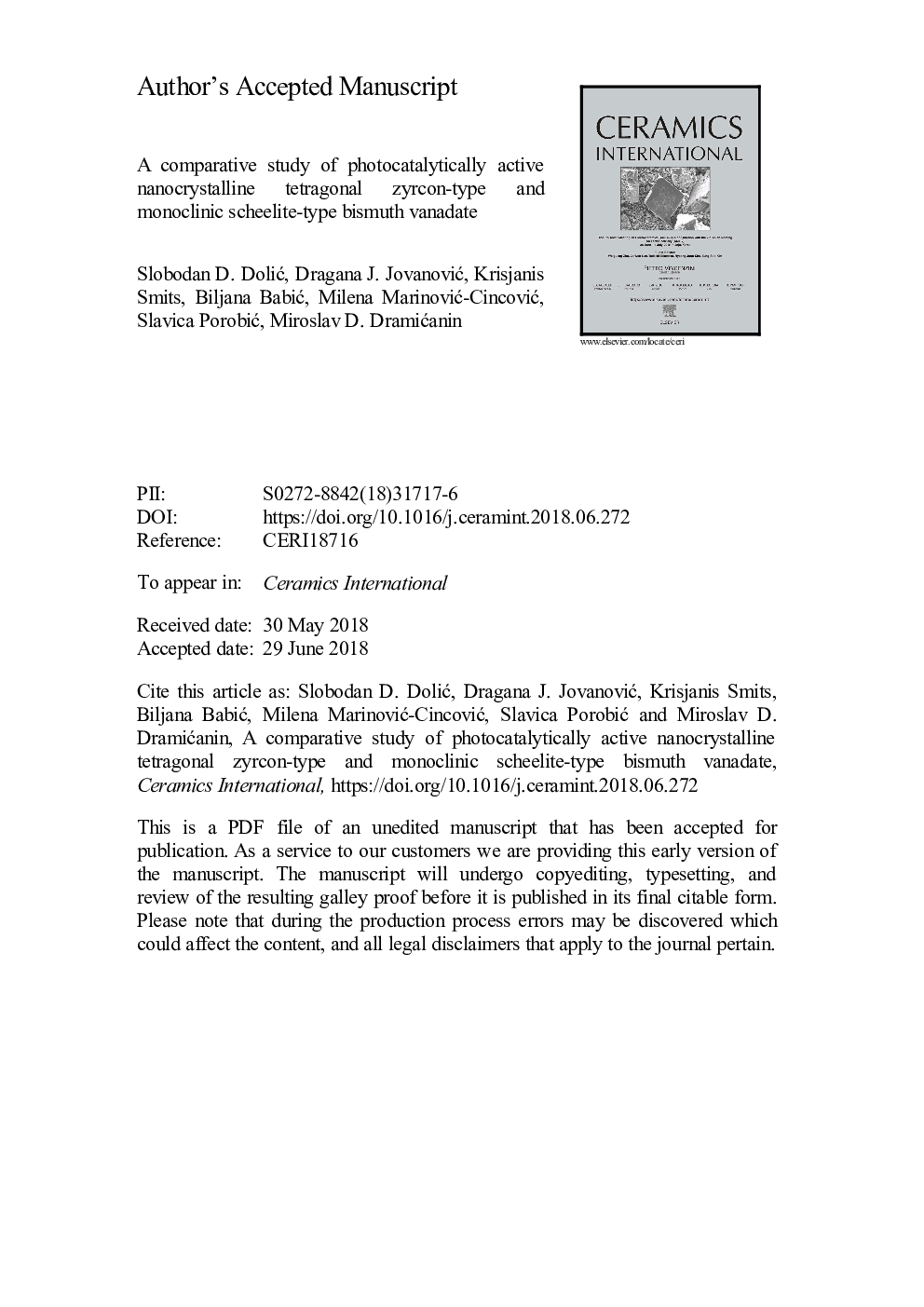| Article ID | Journal | Published Year | Pages | File Type |
|---|---|---|---|---|
| 8948471 | Ceramics International | 2018 | 22 Pages |
Abstract
Monoclinic scheelite-type BiVO4 is currently considered as one of the most promising non-titania photocatalysts, wheras tetragonal zircon-type BiVO4 is still poorly understood. Herein, a new and simple synthetic approach was applied and nanostructured single-phase zircon-type BiVO4 was successfully prepared by a controllable ethylene-glycol colloidal route. In addition, nanostructured monoclinic scheelite-type BiVO4 powders were also fabricated through annealing of the as-prepared samples. A comparative study of the two BiVO4 polymorphs was conducted and it turned out that the novel synthetic approach had a significant impact on porosity and photocatalytic performance of zircon-structured BiVO4. All the prepared materials, as-prepared and annealed, were mesoporous, while measured values of specific surface area of some zircon-structured samples (â¼34â¯m2/g) were â¼7 times higher than those reported thus far for this phase. Interestingly, for the first time, zircon-type BiVO4, previously considered to be a poor photocatalyst, exhibited a better overall performance in degradation of methyl orange compared to monoclinic scheelite-type BiVO4. Hence, it could be expected that the here-presented synthesis and observations will both arouse interest in scarcely studied tetragonal zircon-type BiVO4 and facilitate as well as speed up further research of its properties.
Related Topics
Physical Sciences and Engineering
Materials Science
Ceramics and Composites
Authors
Slobodan D. DoliÄ, Dragana J. JovanoviÄ, Krisjanis Smits, Biljana BabiÄ, Milena MarinoviÄ-CincoviÄ, Slavica PorobiÄ, Miroslav D. DramiÄanin,
